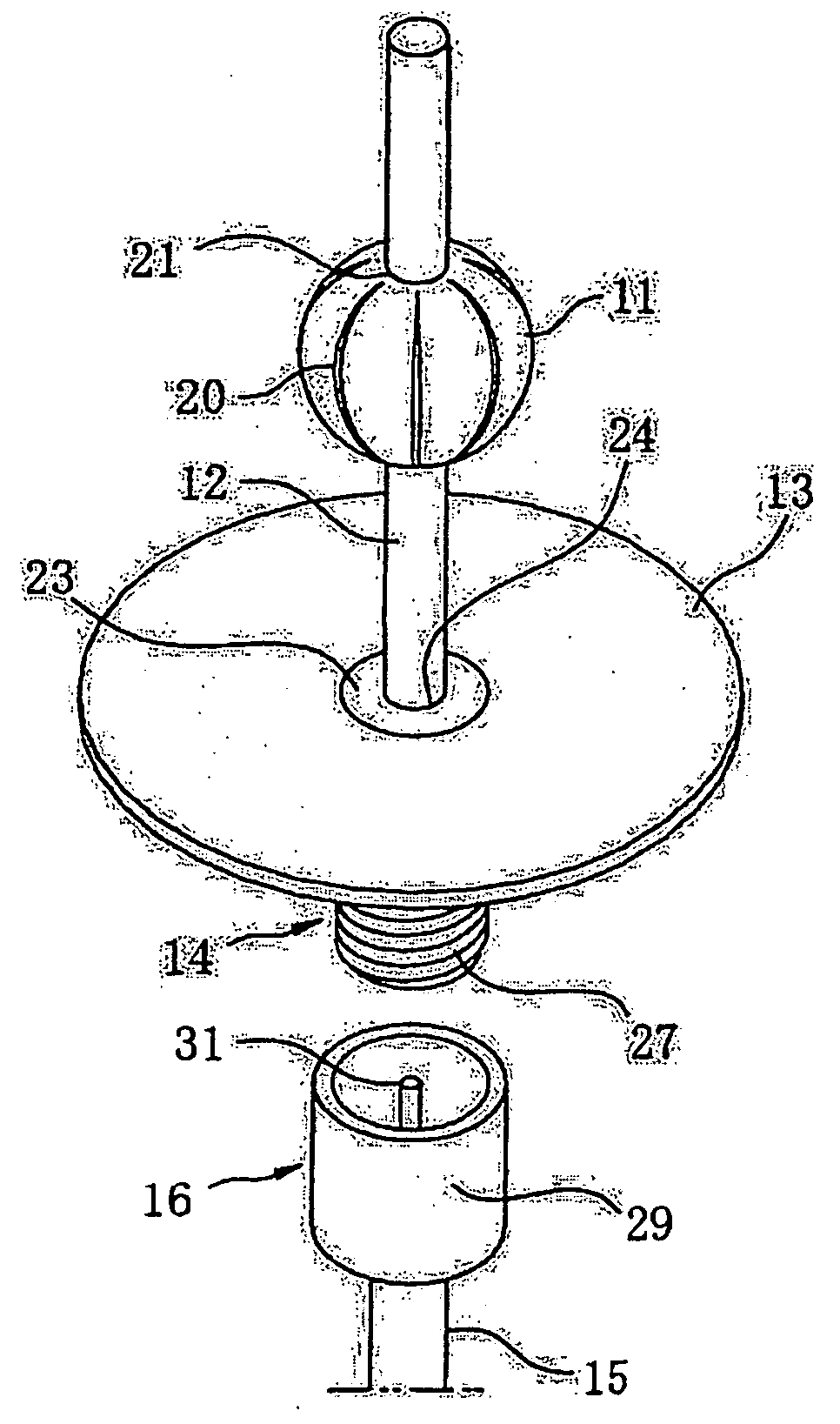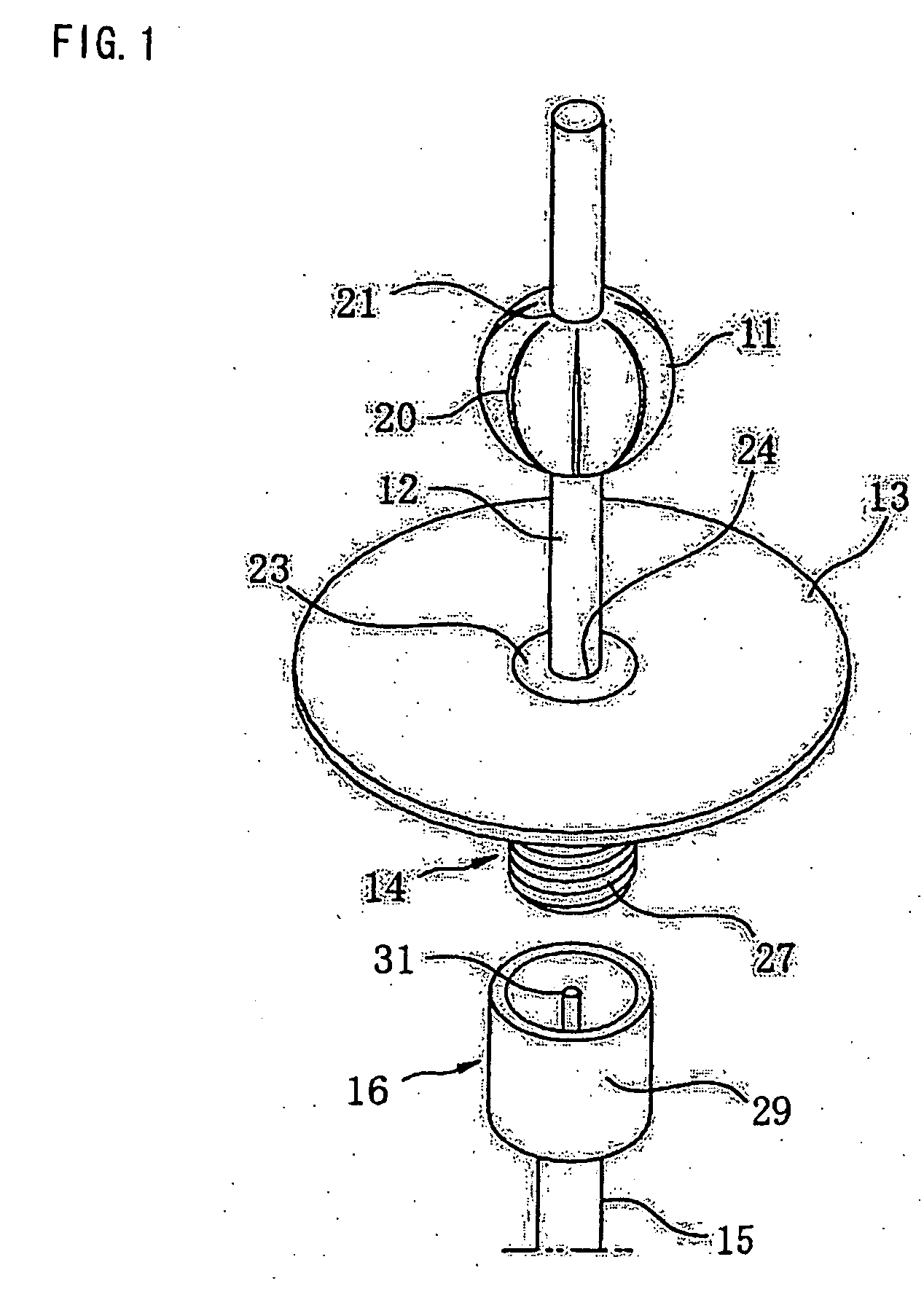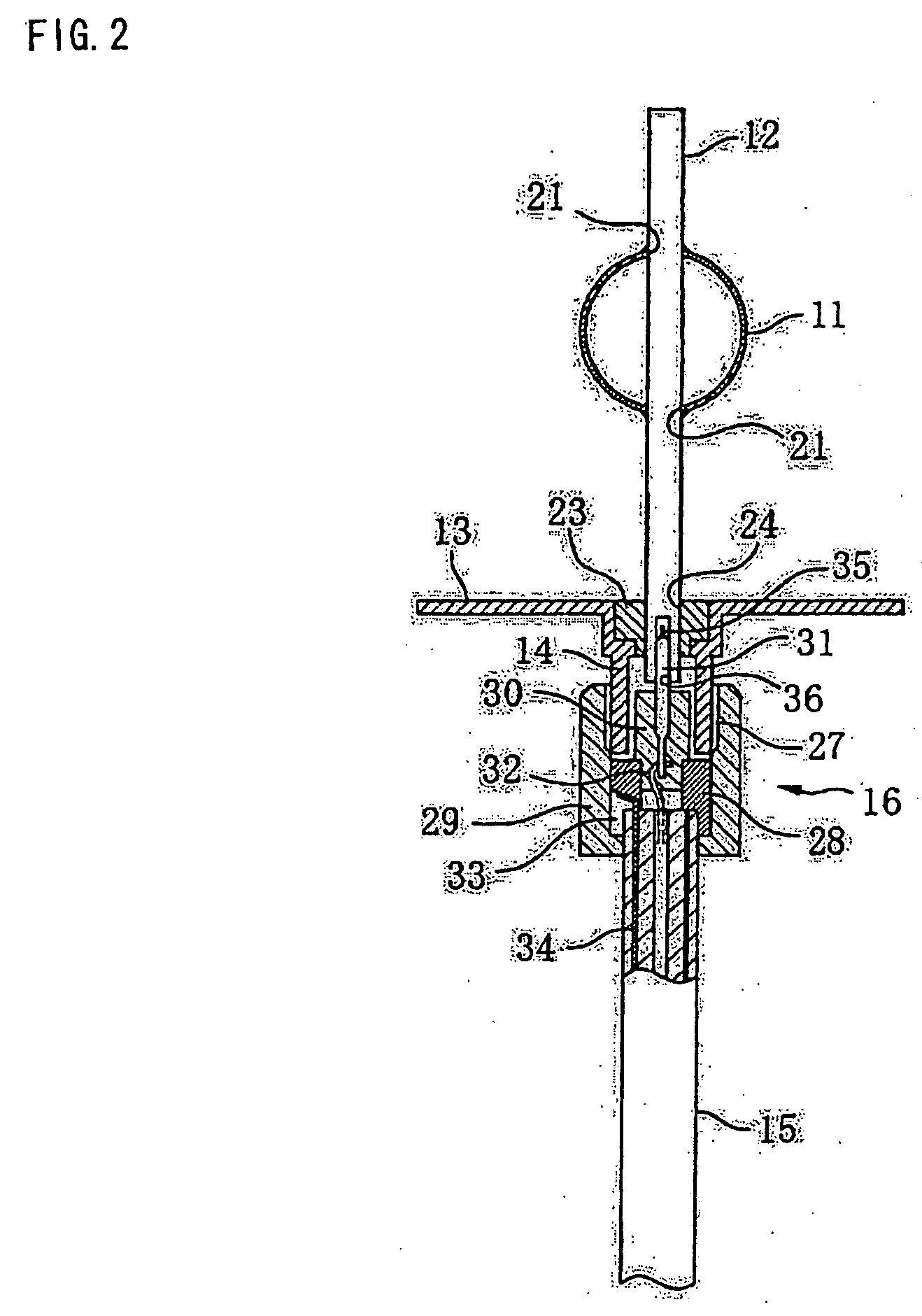Antenna
a broadband antenna and antenna element technology, applied in the field of broadband antennas, can solve the problems of high-cost antennas and low gain, and achieve the effects of wide band, favorable matching, and large surface area of antenna elements
- Summary
- Abstract
- Description
- Claims
- Application Information
AI Technical Summary
Benefits of technology
Problems solved by technology
Method used
Image
Examples
Embodiment Construction
[0037]FIGS. 1 and 2 show the overall structure of the antenna according to one embodiment of the present invention. In the present embodiment, an antenna element 11 is used which is formed of a brass spherical shell having a diameter of 10 mm and a thickness of 0.2 mm. The antenna element 11 is provided on a rod 12 of brass having a diameter of, for example, 2.5 mm so that the rod 12 penetrates therethrough. The rod 12 is fitted on a conductive circular plate 13 of a brass discoid having a diameter of 30 mm so as to be provided upright. On the bottom surface of the conductive circular plate 13, a connector sleeve 14 is integrally linked. To this connector sleeve 14, a coaxial cable 15 is connected via a connector 16.
[0038] The antenna element 11 formed of the brass spherical shell has slits 20 having a width of 0.5 mm and formed on the outer circumferential surface thereof along the circumference thereof at intervals of 60 degrees. These slits 20 are formed in the vertical directio...
PUM
 Login to View More
Login to View More Abstract
Description
Claims
Application Information
 Login to View More
Login to View More - R&D
- Intellectual Property
- Life Sciences
- Materials
- Tech Scout
- Unparalleled Data Quality
- Higher Quality Content
- 60% Fewer Hallucinations
Browse by: Latest US Patents, China's latest patents, Technical Efficacy Thesaurus, Application Domain, Technology Topic, Popular Technical Reports.
© 2025 PatSnap. All rights reserved.Legal|Privacy policy|Modern Slavery Act Transparency Statement|Sitemap|About US| Contact US: help@patsnap.com



